The Chinese Dragon: Unraveling the Beauty of this Magical Creature
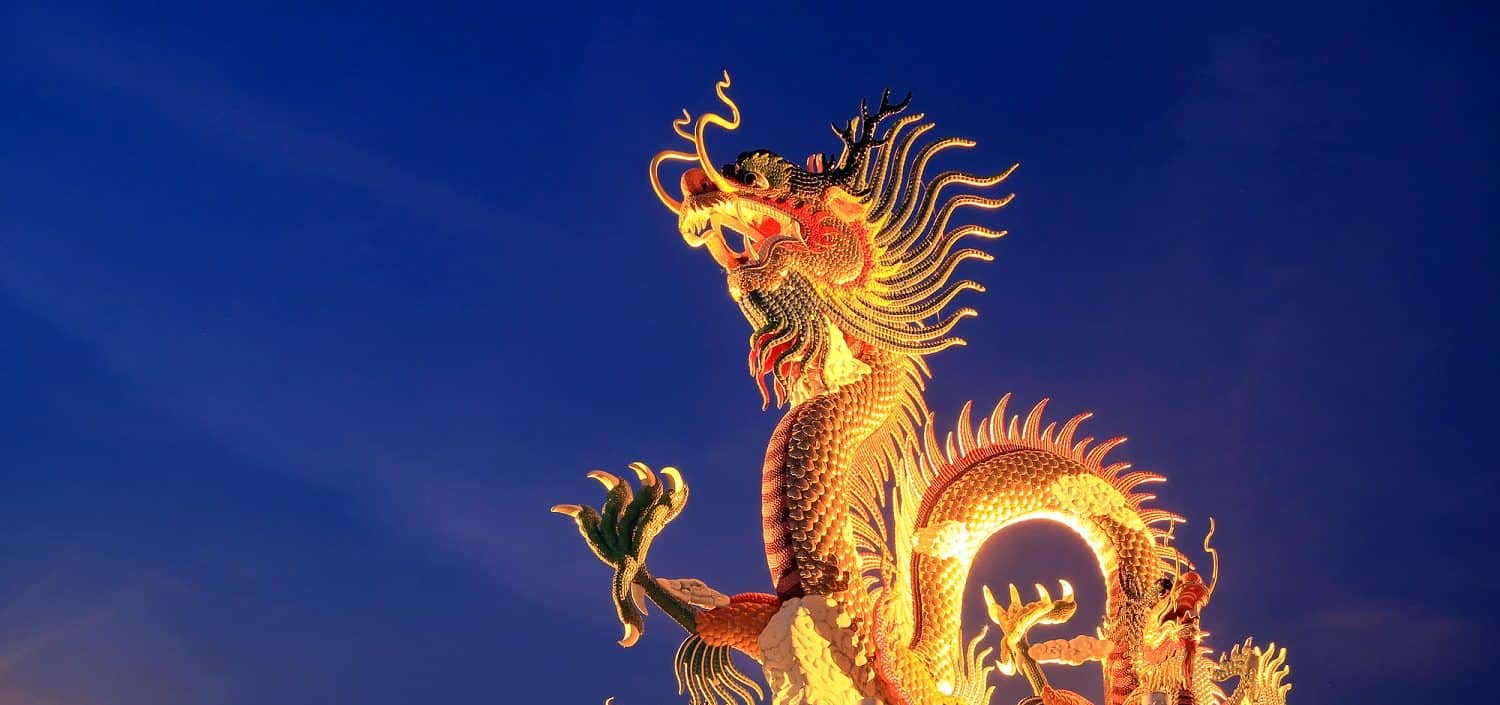
Updated On: April 22, 2024 by Aya Radwan
Dragons are both loved and misunderstood creatures. The Chinese Dragon, in particular, is a divine deity in China. This creature explains the origin of life in China. It represents virtues of power, nobility, control over the earth’s elements and undeniable majesty. Totems and representations of the rather fearsome creature are used daily to draw positive energy and good luck from the surrounding environment.
In this article, we will take a trip through the history of the Chinese Dragon, its influence on the neighbouring countries, the omens it represents and, finally, we’ll take a look at some of the hit films where the Chinese Dragon played an integral role.
What is a dragon?
A dragon is a mythical and legendary creature from the reptile family. It has been a core part of several cultures, particularly East Asian cultures and especially Chinese mythology, culture, and folklore.
Dragons are intertwined with the beliefs and traditions of the people who believe in them. They have been depicted as having four legs, wings, talons, and fangs and can breathe fire. Such a depiction still depends on the culture of the country you’re talking about.
What is the Chinese Dragon?
Long, Lung or Loong are the names given to the Chinese Dragon. Surprisingly, the Chinese Dragon can be depicted as a turtle or a fish. However, the most common form of the Chinese Dragon looks like a snake with four legs.
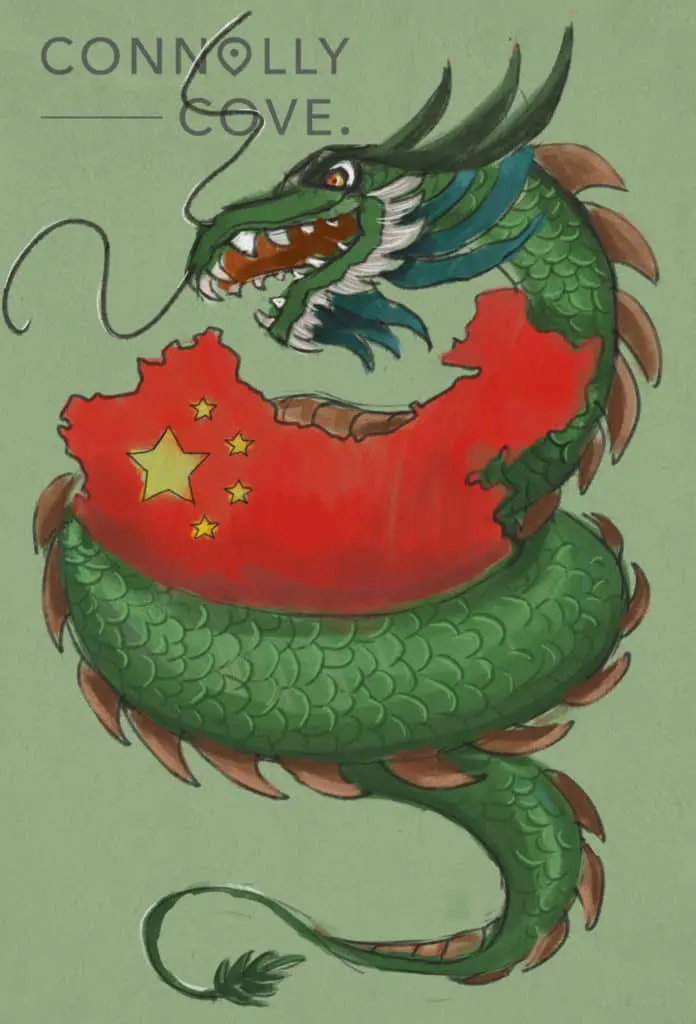
Dragons have very strong symbolism in Chinese culture. While the Chinese Dragon’s existence is based on the theories of Chinese alligators, snakes, nature worship, and thunder, the creature symbolizes good luck, strength, and power. It also represents absolute control over weather and water, like rainfall, storms, and typhoons.
What is the origin of the Chinese Dragon?
Since dragons are mystical creatures, it’s only natural that they’re related to high powers, and the Chinese Dragon is no different. A symbol of royalty in ancient China, Liu Bang, the father of the Han dynasty, claimed his mother had a dream about a dragon before he was conceived. Since then, the dragon has been closely associated with the Emperor of China and was used as a symbol of imperial power. In these imperial times, it was a crime for common people to use anything related to dragons.
The Symbolism behind the Chinese Dragon
I still remember the 2008 opening ceremony for the Olympic Games and how the Chinese culture was impeccably represented, and dragons were one of the pieces in the puzzle of the performance. And let’s not forget the huge celebrations that took place in China and other Asian countries in 2012, which was the year of the dragon.
Dragons are deeply rooted in every corner of Chinese culture, from legends to festivals, arts, astrology, idioms, and even names. While Western cultures view dragons as evil beings living in caves and mountains, Chinese dragons are friendly, auspicious, and powerful and live at the bottom of lakes and rivers and in cloudy skies.
Imperial power, surmounting power over rain, water, weather, and good fortune are the main traits the Chinese dragon symbolizes in China. The imperial power drawn from the dragon could be found in the carvings on the furniture, stairs, walkways and even the emperor’s clothes, with dragon emblems adorning all of them.
In ancient China, the four Dragon Kings controlled water and the weather. Each king was in charge of one of the Four Seas of China:
- The East Sea (the East China Sea)
- The South Sea (the South China Sea)
- The West Sea (Qinghai Lake and lakes beyond)
- The North Sea (Lake Baikal)
Some shrines and temples still stand today, where people pray to the Dragon Kings to bestow them with rain and good weather or stop droughts and floods.
One of the most popular legends in Chinese culture is that of Shennong, the Divine Farmer. People believed he was the son of a beautiful princess and a dragon, and some claimed he was the father of the Yellow Emperor (Huangdi). Shennong taught the people how to plant crops, the tips and tricks of agriculture, and how to use herbal drugs. Hence, the dragon has always been seen as a symbol of prosperity, harvest and brings good fortune.
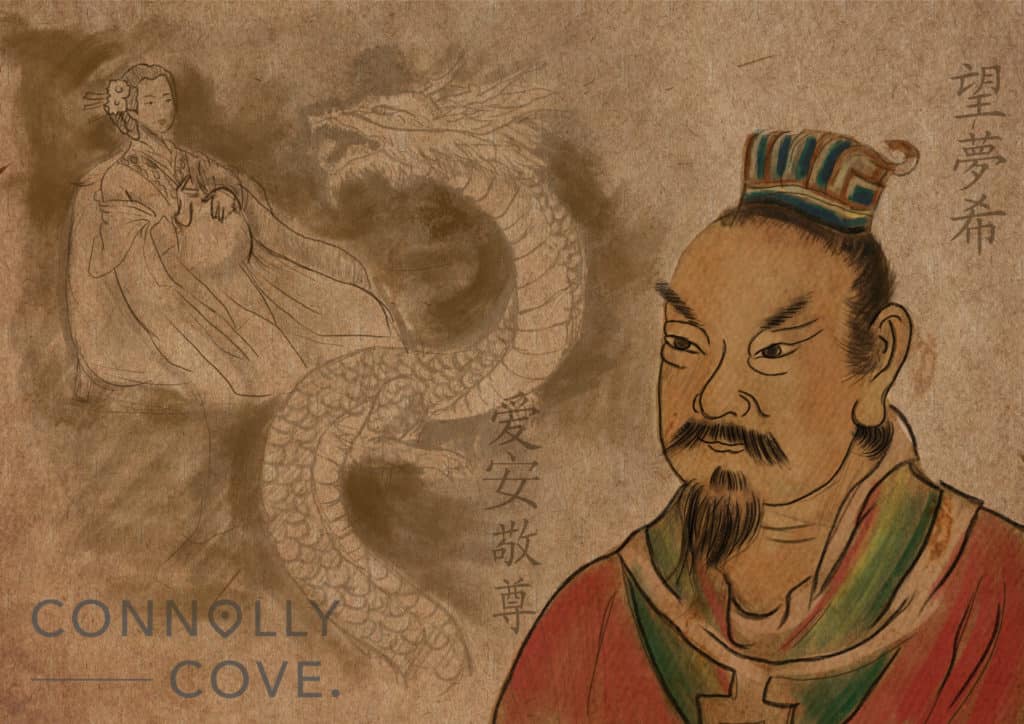
In addition to all the exceptional symbolism of the Chinese Dragon, it represents the developing, pioneering, and unrelenting spirit of the Chinese people that keep up with the pace of the world.
Significance of the Chinese Dragon in China
The significance of the dragon in China goes all the way back to the beginning of creation, where the creation of the Chinese people is closely associated with the Chinese dragon. While there are several interpretations of the legend, the dragon is at the core of it.
One interpretation goes that Pan Gu, an ancient Chinese deity, was the first divine being who created everything and was helped by a dragon during the creation of the universe. In essence, Pan Gu had emerged from an egg which contained the entirety of the cosmos, and his birth released the whole universe. Another interpretation goes that the first humans were moulded from mud by a goddess named Nu Gua, who had a woman’s torso and a dragon’s or a snake’s tale in earlier versions of the legend.
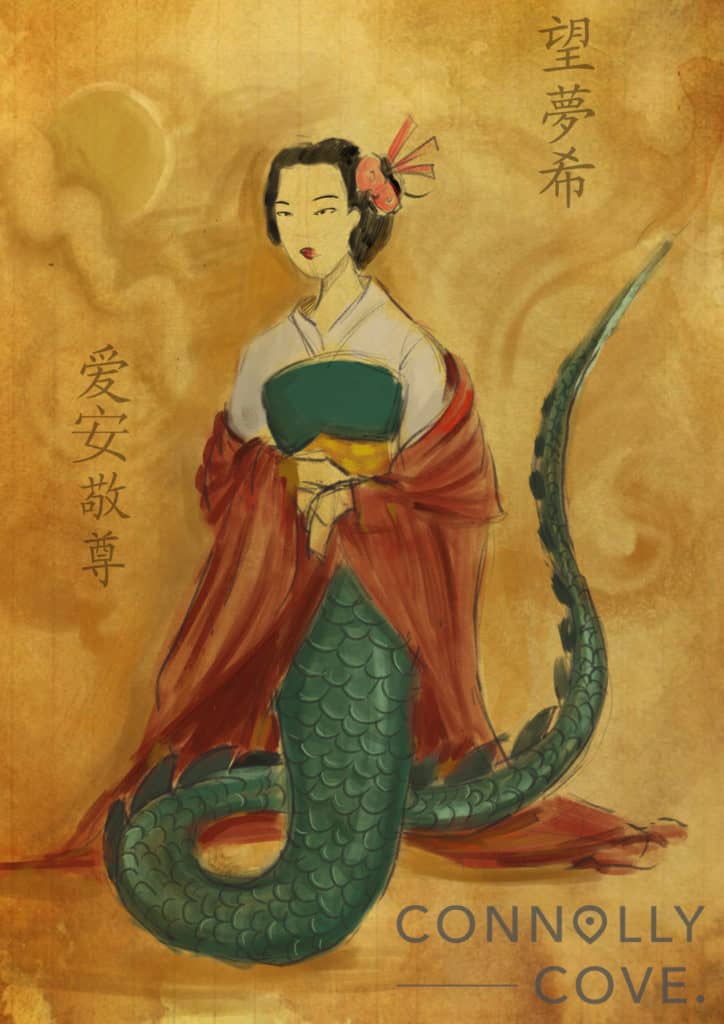
Apart from legends about creation, the dragon is seen vividly in the norms of the emperors back in history. Huang Di, also known as the Yellow Emperor, was known to incorporate the animal totem of every tribe he defeated into his coat of arms. This resulted in mixing various parts from different animals, which now represent the Chinese zodiac animals. The result of the mixed animal totems was the shape of a dragon, symbolising a unified China.
As dragons in Western culture were mainly portrayed as evil beings, usually fearsome and blowing fire out of their mouths, they weren’t thought much highly of. However, dragons are divine and noble creatures in Chinese and several other Asian cultures. They were once worshipped as they possessed many dignified and respectable characteristics. Wisdom, luck, nobility, and protection were some of the main offerings by the dragon to the people.
Colours of the Chinese Dragon and their Symbolism
There are different colours of the Chinese Dragon; each colour symbolizes something different and is used differently from the other colours. These colours are:
1. Blue and Green
These two colours, in general, are representative of nature and its different elements. Blue and green dragons in China also represent nature, as well as health, peace, healing, and growth. Using blue and green dragons signifies that spring is close when plants start growing again and new life springs out of the soil.
2. Red
You often see the Red Dragon when the Chinese Dragon is depicted because Red is China’s lucky colour. You will notice the Red Dragon adorning buildings or houses where a wedding or a festival takes place. People will also decorate their homes with red dragons to draw good luck during many celebrations and festivals. The colour red also depicts the dragons used in dragon dancing.
3. Black
Chinese people have always associated Black Dragons with vengeance and evil. In many Chinese movies, street gangs and criminal organizations often use Black Dragons as their emblem. More so, the criminals themselves often have tattoos of black dragons as a representation of evil or vengeance. In ancient China, the Black Dragon was also a sign of catastrophes like storms and floods.
4. White
Although the colour white symbolises death and mourning in Chinese culture, the White Dragon symbolises virtue and purity.
5. Yellow
You might have noticed when we mentioned the Yellow Emperor that the colour yellow is a significant colour for Chinese people. The colour yellow is perceived as the imperial colour. Since ancient times, the Yellow Dragon has been the emperor’s symbol, representing wisdom, power, and good fortune.
6. Golden
Golden dragons represent deities or harvests to show power, prosperity, wealth, and strength.
The Different Types of the Chinese Dragon
Apart from the most popular depiction of the dragon in China, there are different types of the dragon, and some of them have different colours, as mentioned previously. These are the different types:
1. The Azure Dragon
Often referred to as the Green Dragon, the Blue Dragon, or the Bluegreen Dragon, the Azure Dragon is considered one of the four main beasts in Chinese folklore besides the Black Tortoise, the White Tiger, and the Vermillion Bird. Each of these mystical beasts represents the four directions, and the Azure Dragon represents the east. It also represents the spring season and controls the rain and wind.
2. The Winged Dragon
The Winged Dragon is a resident of the sky and is considered the ancestor of all dragons. In Chinese legends, the Winged Dragon is the controller of the four seasons and the Yellow Emperor’s descendants.
3. The Horned Dragon
The Horned Dragon is an evil dragon that has been alive for more than 500 years, and at that time, it developed horns. It is said to cause floods, according to Chinese legends.
4. The Coiling Dragon
Seen as the controller of time, the Coiling Dragon resides on earth and cannot fly up to the sky.
5. The Treasure Dragon
According to Chinese culture, the Treasure Dragon is the protector of personal wealth and even hidden treasures.
6. The Underworld Dragon
Perceived as the controller of rivers and seas flow, the Underworld Dragon is believed to live in the oceans, rivers, water streams, lakes or underground.
7. The Cloud Dragon
Well, true to its name, the Cloud Dragon is believed to live up in the clouds and can fly through thick clouds to make rain. The Cloud Dragon is one of the most preferred by Chinese painters to paint.
8. The Dragon King
Also known as the Old Dragon, the Dragon King is the most powerful and intelligent in Chinese mythology. This is mainly because it can shapeshift into other shapes and beings and even shapeshift into human form. The Old Dragon is said to control all of China’s seas.
Sons of the Chinese Dragon
The dragon in Chinese mythology is depicted as having nine sons, in conformity with no. 9, the luckiest number in the country. Each son has a different character, and their images are often used in decorations of buildings and sculptures. Just like their father, the sons of the Chinese Dragon are used in decorating imperial palaces and buildings.
These are the nine sons of the Chinese Dragon:
1. Bixi
Bixi is considered to be the eldest of the Chinese Dragon’s nine sons. It has the shape of a turtle and has very sharp teeth. From its form, you can derive that Bixi likes to carry heavy objects, which is probably why you might find it engraved on monuments or even graves.
2. Qiuniu
Qiuniu is A yellow dragon with scales that is a master of music, which is why you will find it adorning different musical instruments.
3. Yazi
Yazi is depicted as having a leopard’s head and a snake’s body. With this powerful depiction, it is known for the desire to fight or kill; hence you can find it adorning sword grips.
4. Chaofeng
With an adventurous nature, Chaofeng is often found on the roof ridges of imperial palaces.
5. Pulao
Since Pulao is often said to cry very loudly, and that’s probably why you might find it on the handles of bells.
6. Chiwen
Living deep down in the sea with a coarse voice, Chiwen relishes devouring other creatures. You can spot its depiction on the ends of palace ridgepoles.
7. Bi’an
The reason that Bi’an is often found engraved on the gates to prison is the myth that it likes lawsuits.
8. Suanni
This dragon looks more like a lion and is known for its likeness to sitting cross-legged and smelling incense. This is probably the reason why it’s mostly found on incense burners and even the seats in Buddhist temples.
9. Fuxi
Fuxi is the only son that looks more like the Chinese Dragon. It can be found engraved on stone tablets.
Manifestation of the Chinese Dragon in Daily Life
“Sometimes life can be as bitter as dragon tears. But whether dragon tears are bitter or sweat depends entirely on how each man perceives them.”
Chinese Proverb
The way the dragon is manifested in the lives of the Chinese people is countless, up to the point that outstanding and successful people are compared to a dragon, a symbol of excellence. Even if you want your kids to do well, you can use an old Chinese proverb that says just that, to wish your kids to be more like dragons.
Proverbs are not the only way the mighty dragon is featured in everyday life in China. There’s so much you can learn about the Chinese dragon, which you will see in these cultural references:
1. Lucky Number 9
Dubbed the Number of Heaven, the number 9 has great significance in China and dragons are closely tied to it. This can be seen even in the classical depictions of the dragon in Chinese culture, where the dragon is described as having 117 scales or 9×13 to be exact, as well as 81 or 9×9 Yang and 36 or 9×4 Yin.
Lucky no. 9 is also why the classical depictions of the dragon in China identify nine forms of the dragon and nine sons. One of the Chinese Dragon’s most popular manifestations is the Nine-Dragon Wall, a spiritual wall with portraits of 9 dragons that adorn one of the walls in the imperial palaces and gardens.
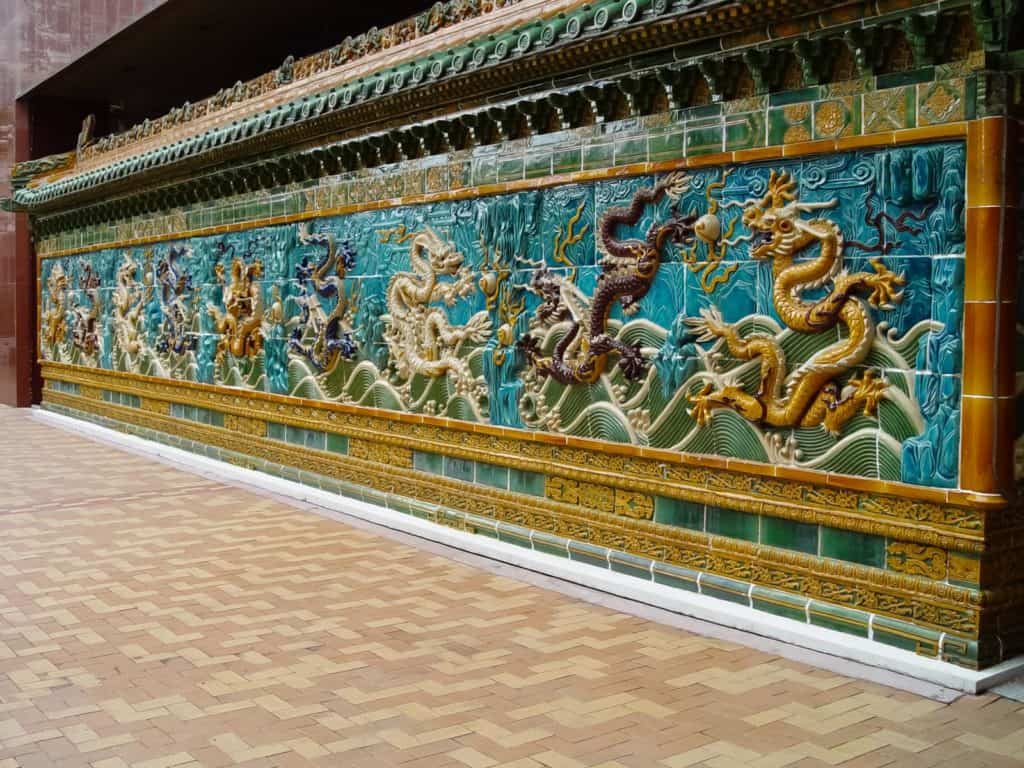
Moreover, because the number 9 is sacred, emperors and high-ranking officials were the only ones allowed to wear the robe with nine dragons. While the emperor had to hide one of the dragons because he was seen as an incarnation of the dragon, the high-ranking officials had to wear complete surcoats to cover the robe completely. Low-ranking officials were only allowed to wear eight or five dragons, entirely covered by surcoats as well.
Several places in China carry and represent the Nine Dragons, such as Kowloon, an area in Hong Kong. There’s a part of the transboundary river of the Mekong in Vietnam that bears the same meaning as the Nine Dragons.
2. The World Famous Chinese Zodiac
Whether you believe in zodiac signs or not, it’s said that the Chinese Zodiac is the most accurate on earth, not just in describing the people falling into each sign but also when it comes to expectations and future fortunes. While the zodiac signs we know are divided among the year’s 12 months, the Chinese zodiac consists of 12 years with 12 animals each year.
And due to its undeniable importance in Chinese culture, the dragon or Loong is the fifth of the signs of the famous Chinese Zodiac, which, together with the other signs, constitute years in the Chinese Calendar. Each group of years in the Chinese Zodiac include some characteristics or personality traits. The Dragon Years are considered the most popular among Chinese people and believers in having children. It’s estimated that the children born during Dragon Years are more than those born during any animal years of the entire Chinese calendar.
3. Constellations
There’s a unique system in the science of traditional Chinese Astronomy, where the celestial sphere is divided into constellations. QingLong, otherwise known as the Azure Dragon, one of the Dragon Gods in China, is one of four symbols representing Chinese constellations. However, QingLong is considered the primary one of these constellations. The other three constellations are Zhu Que, a Vermillion Bird, Bai Hu, a White Tiger, and Xuan Wu, a creature resembling a Black Tortoise.
Also, the Five Phases or Elements used in Chinese philosophy used by numerous traditional fields to explain various phenomena are Wood, Fire, Earth, Metal and Water. In this regard, the Azure Dragon or QingLong is associated with the element of Wood and the direction of the East.
4. Dragon-boat Racing
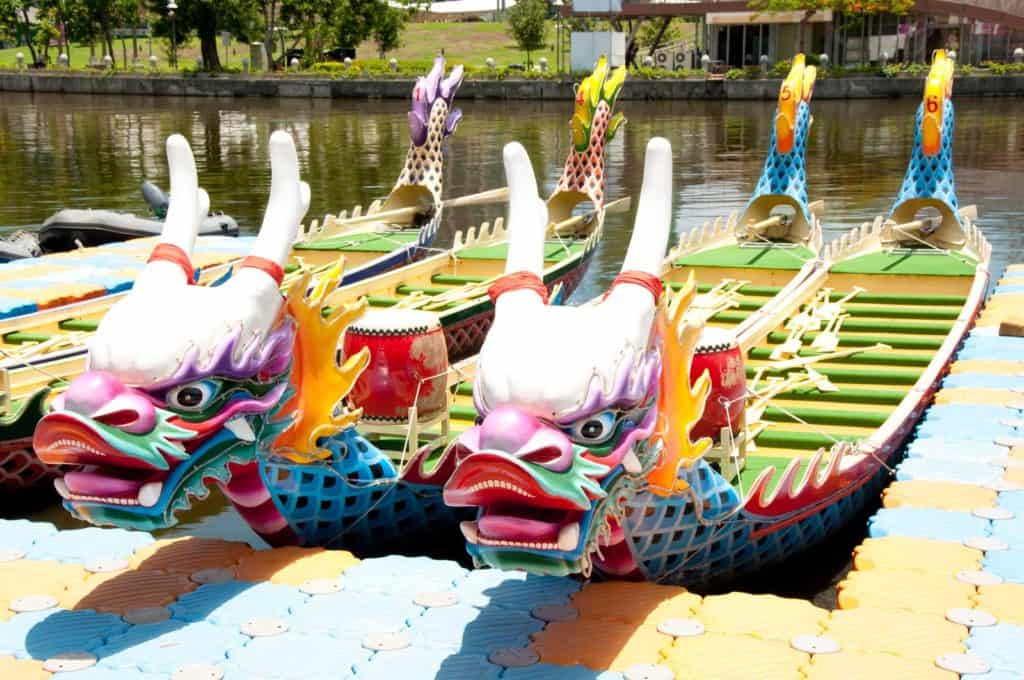
It is only logical that dragons are also represented in the different festivals and festivities in China. One of the most important and famous festivals is the Duanwu Festival, which takes place on the 5th day of the 5th month of the Chinese calendar.
The representation of the dragon is in the shape of a boat racing, which has the head of a dragon in the front and the tail at the end. There are usually 20 paddlers or more on each boat, as well as a steersman and a drummer. Similar festivities, including dragon-boat racing, were recorded throughout history in India by Ibn Batuta, who visited the shores of the Indian state called Kerala, where the race is called Vallamkali.
5. Dragon Dancing
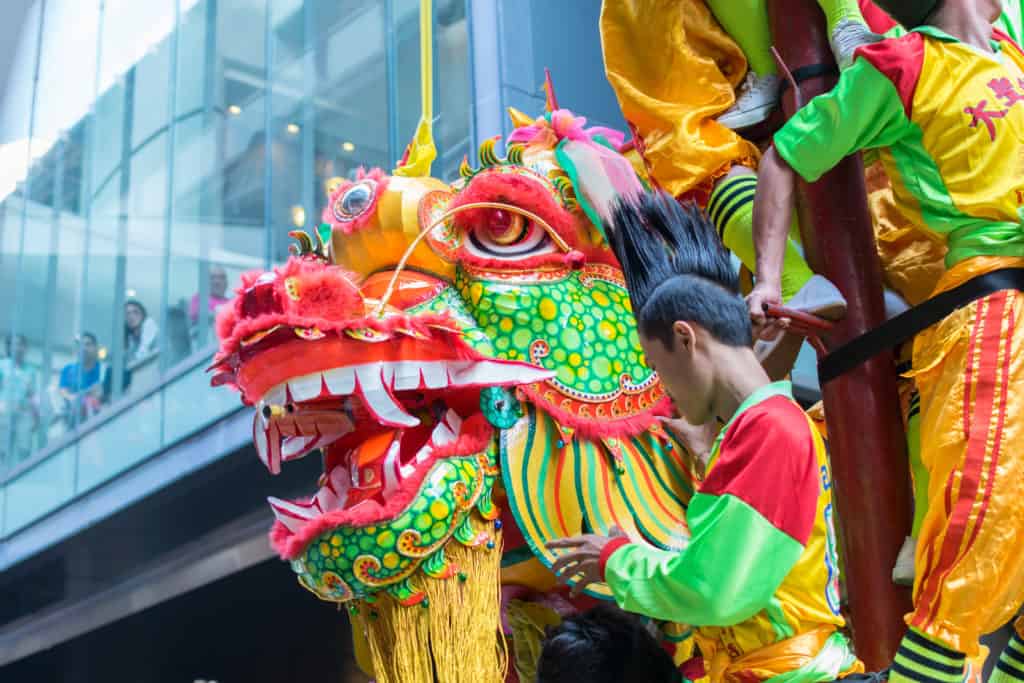
Dragon dancing is one of the most popular festivities seen on many significant occasions, such as the Chinese New Year. It is also seen for the opening ceremony of new places and shops and important events such as the Olympic Games in 2008. Dragon dancing includes life-size dragon puppets made from cloth and supported by wooden poles. The performers use these wooden poles to move the dragon around in a predesigned choreography that goes with the beat of drums and music.
6. Dragons and Fenghuang
Fenghuang is a mythical bird often found in many mythological cultures of several East Asian countries. The bird resembles a phoenix, considered superior to all other birds, as it reigns over them. In Chinese mythology, the masculine Chinese dragon is often paired with the feminine Fenghuang to symbolise a healthy and blissful relationship. The pair also signify the happy marriage of the ruler and a long reign.
7. The Chinese Dragon as Nāga
The Nāga is a mythical creature made of half a serpent and half a human. It is considered a divine being by many countries that follow Buddhism. However, these countries infused the notion of the Nāga with local beliefs that circled serpents and dragons, and the same happened with the Chinese dragon.
One depiction that incorporates the Nāga with the dragon is the multi-headed Nāga coming out from the mouth of a Makara that was depicted in the shape of a Chinese dragon. You can find this depiction in a place of meditation called Phra Maha Chedi Chai Mongkol at the Wat Pha Namthip Thep Prasit Vararam in Thailand. A Makara is a mythical sea creature at the core of Hindu mythology.
8. The Chinese Dragon and Tigers
Many Asian cultures consider tigers as divine beings. However, tigers are also considered the dragon’s ultimate nemesis, hence the numerous artworks depicting both beings fighting a fierce battle. The Chinese idiom “Dragon versus Tiger” has sprung out of this idea of a rivalry between the two creatures and is used in nowadays sports competitions.
Such fierce beings were naturally an inspiration to Chinese martial arts, where the “Dragon Style” represents the fighting style of understanding the movement of your rival. In comparison, martial arts “Tiger Style” means using brute strength and memorising the techniques used.
9. The Chinese Dragon and Botany
A faction of the elm tree called Ulmus pumila Pendula grows in Northern China. It has long branches that resemble the claws of a dragon. This would explain why it’s known locally as Lung Chao yü shu or dragon’s claw elm.
10. Dragon Feng-Shui
Feng Shui represents the arrangement of the pieces in any living space to make them in harmony and balance with the natural world. The collection of the pieces creates a balance of energy forces in the place, so the people living in this area are in harmony with the natural world. Since Feng Shui is sometimes known as Chinese geomancy, it’s no surprise the dragon plays a significant role in it.
The dragon in Feng Shui represents the earth and the direction east, the direction from which the sun rises, and great success, prosperity, bravery and rain. The dragon figurines used in Feng Shui are often snakes that have beards and four legs.
When arranging the pieces in a living space, it’s preferable to have the dragon figurines placed behind you. For example, they are placed on a counter behind your desk if you’re arranging office space. This is to derive power from the dragons and have their support. Positioning the dragon figurines in front of you is considered disrespectful, and you won’t be able to derive from their power.
Following the practices of Feng Shui, if you place a dragon totem beside a water source, it is considered to bring wealth and a sign of good fortune on the way.
Movies derived from the Chinese Dragon and their Meanings
Everyone loves seeing a dragon on the official cover of a new feature film. Although not all the dragons in movies represent Chinese dragons and rely on Westernized images, the films are still delightful to watch. Whether your favourites are feature or animated films, here’s a list of some dragon movies, with many referencing the Chinese Dragon.
1. Shang-Chi and the Legend of the Ten Rings
The most recent creation from Marvel features the ultimate protector of humanity. This Chinese water dragon not only protects the realm of the Ta Lo village but also protects the souls of the rest of the humans from being stolen.
2. Raya and the Last Dragon
This is our family’s favourite animated film, and we watch it at least once a week. After humanity falls into a struggle over the dragon gem that holds the magic of the last dragons on earth, each tribe on the land takes a piece of the shattered gem. After the evil Druun consumed almost all life in the land known as Kumandra, Raya set on a journey to find the last standing dragon, Sisu, a water dragon. Together they set on a journey to collect all the gem pieces to bring back humanity.
3. Mako Mermaids
Mako Mermaids is a great Australian show for kids fascinated by mermaids. The show recently introduced a Chinese water dragon from Chinese mythology into the third season of the show to make way for a new Chinese mermaid to join her fellow mermaids.
4. Viy2: Journey to China
This exciting cooperation between Russian and Chinese filmmakers is set in the 18th century when Jonathan Green, a cartographer, embarks on an eventful journey that takes him from England to China and his assistant Chen-Lan who is, in fact, a Chinese princess. The film follows Green’s journey of meeting the Great Dragon and his encounters with Russia‘s prisoner, Tsar Peter I.
5. The Mummy: Tomb of the Dragon Emperor
The last movie in the unforgettable The Mummy trilogy features Brendan Fraser as the fierce mummy fighter Rick O’Connell and Jet Li as the first Emperor of China. After uniting the people, the Emperor becomes known as the Dragon Emperor and establishes the Qin Dynasty. When Emperor Han’s greed blinds him, his once loyal sorceress curses him and his army, creating the Terracotta Army. Centuries later, the Emperor and his army are resurrected using the Eye of Shangri-La, and Rick and his family must figure out a way to destroy the Emperor.
6. Mulan
Our childhood wouldn’t have been complete without the legend of the Chinese warrior Hua Mulan by Disney. Afraid that her sick father would be taken to serve in the military, Mulan successfully takes his spot and pose as a man. The supposedly disgraced family guardian dragon Mushu sets by himself to protect Mulan as she joins the army, passing as a man with the name Fa Ping. Mushu does so because he accidentally broke the statue of the guardian dragon whom he was supposed to wake his spirit to act as Mulan’s guardian. The film follows Mulan and Mushu’s journey, their encounters with the army and captain Li Shang, and their preparations for the war against the Hun invasion.
7. The Hobbit Trilogy
The well-known film series based on The Hobbit by J. R. R. Tolkien mainly revolves around the dragon Smaug. This mighty dragon invaded the Dwarf Kingdom of Erebor almost 150 years before the events described in the novel took place. Reaching the mountain where Smaug lives and where he’d hidden his treasure is considered the story’s main objective.
There are many novels, films, and television series that incorporate dragons. Even though they aren’t all based on the Chinese Dragon, they cannot be summed up easily. One cannot forget the epic three dragons Drogon, Rhaegal and Viserion from the history-making show Game of Thrones, or the first dragon movie I watched, How To Train Your Dragon.
In my opinion, there are many incorporations of dragons in media that genuinely represent the core values and characteristics of the Chinese dragon; friendly but fierce, noble, brave, and most definitely a sign of power. It was about time!






